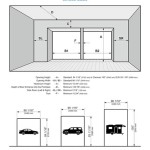Converting Your Carport Into a Garage In Florida
Florida's climate, characterized by intense sunshine, frequent rainstorms, and occasional hurricanes, makes safeguarding vehicles a priority for many homeowners. While carports offer a degree of protection, converting them into fully enclosed garages provides enhanced security, weather resistance, and potential added value to a property. This endeavor, however, requires careful planning, adherence to local regulations, and a sound understanding of construction principles. This article will explore the key aspects involved in converting a carport into a garage in Florida, covering planning considerations, permitting processes, structural requirements, and cost implications.
Planning and Design Considerations
The initial stage of a carport-to-garage conversion involves meticulous planning and design. This step lays the foundation for a successful project and minimizes potential complications down the line. Several factors warrant careful consideration.
First, the existing carport structure must be thoroughly assessed. The foundation's integrity is paramount. The existing slab must be adequate to support the additional weight of walls and a garage door. Cracks, settling, or other signs of damage must be addressed by a qualified engineer or contractor before proceeding. If the existing slab is insufficient, reinforcing or replacing it may be necessary, significantly impacting costs.
Second, the dimensions of the carport will dictate the size and layout of the resulting garage. Consider the intended use of the space. Will it be solely for vehicle storage, or will it also serve as a workshop, storage area, or hobby space? Adequate space for maneuvering vehicles in and out of the garage is essential. Furthermore, consider the height of the carport, ensuring sufficient vertical clearance for the garage door mechanism and any overhead storage.
Third, the design should integrate seamlessly with the existing architecture of the house. The garage should complement the existing style and materials to maintain aesthetic appeal and avoid detracting from the property's value. Consider matching the siding, roofing materials, and paint colors to create a cohesive look. The placement of windows and doors should also be carefully considered to maximize natural light and ventilation while maintaining privacy and security.
Fourth, drainage is a critical aspect of the design. Florida's frequent rainfall necessitates proper drainage to prevent water from pooling around the garage, which can lead to structural damage and mold growth. Ensure the garage floor is slightly sloped to facilitate water runoff. Gutters and downspouts should be installed to direct rainwater away from the foundation.
Finally, consider the location of utilities. Electrical wiring will be required for lighting, outlets, and the garage door opener. If you plan to use power tools or other appliances in the garage, ensure the electrical system can handle the additional load. Plumbing may be necessary if you intend to install a sink or other water fixtures. Consult with licensed electricians and plumbers to ensure that all utility connections are properly installed and meet local codes.
Permitting and Local Regulations
Converting a carport into a garage in Florida requires adherence to local building codes and regulations. Obtaining the necessary permits is crucial to ensure that the project meets safety standards and complies with zoning ordinances. Failing to obtain permits can result in fines, delays, and even the requirement to undo the work.
The first step is to contact the local city or county building department to determine the specific requirements for a carport-to-garage conversion. The requirements can vary depending on the location and the scope of the project. Be prepared to provide detailed plans and specifications, including structural drawings, electrical layouts, and site plans.
The permitting process typically involves several stages. The application will be reviewed by building officials to ensure compliance with zoning regulations, building codes, and other applicable ordinances. The review process may take several weeks or even months, depending on the complexity of the project and the workload of the building department.
Once the application is approved, a building permit will be issued. The permit must be prominently displayed on the property during construction. Building inspectors will conduct periodic inspections throughout the construction process to ensure that the work is being performed in accordance with the approved plans and specifications.
Common building code requirements include: structural integrity of the walls and roof, fire resistance of materials, proper ventilation, electrical wiring standards, and accessibility requirements. Florida Building Code (FBC) is a prominent code used through out the state.
Zoning regulations may dictate setbacks from property lines, height restrictions, and allowable land coverage. Homeowners' association (HOA) rules may also impose restrictions on exterior modifications. It is essential to consult with the HOA before beginning the project to ensure compliance with their guidelines. Ignoring HOA rules can lead to disputes and potential legal action.
In addition to building permits, other permits may be required depending on the scope of the project. For example, an electrical permit may be required for electrical work, and a plumbing permit may be required for plumbing work. Ensure all necessary permits are obtained before commencing construction.
Structural Requirements and Construction Process
The structural integrity of the converted garage is paramount to ensure its safety and durability. The construction process should be undertaken by qualified contractors with experience in carport-to-garage conversions. Key structural aspects include the walls, roof, and garage door.
The walls must be constructed to withstand wind loads and other environmental factors. In Florida, hurricane-resistant construction techniques are essential. Walls can be constructed of concrete block, wood framing, or other approved materials. Concrete block is a popular choice for its durability and resistance to moisture and pests. Wood framing is more lightweight and easier to work with, but it must be properly treated to prevent rot and insect damage.
The walls must be securely anchored to the existing foundation. Anchor bolts or other approved fasteners should be used to connect the walls to the slab. The walls should also be properly braced to resist lateral forces from wind and seismic activity. Hurricane straps may be required to connect the walls to the roof structure.
The roof structure must be capable of supporting the weight of the roofing materials and withstanding wind loads. The existing carport roof may need to be reinforced or replaced to meet current building codes. Common roofing materials include asphalt shingles, tile, and metal. The choice of roofing material will depend on the architectural style of the house and the climate conditions. Underlayment beneath the roofing material is crucial for waterproofing.
The garage door is a critical component of the conversion. It must be properly installed and maintained to ensure its smooth and safe operation. There are several types of garage doors to choose from, including sectional doors, roll-up doors, and swing-out doors. Sectional doors are the most common type and consist of panels that rise vertically along tracks. Roll-up doors consist of a single sheet of metal that rolls up into a coil above the opening. Swing-out doors are hinged and swing outward like traditional doors.
The garage door opener should be equipped with safety features, such as sensors that prevent the door from closing if an object is detected in its path. The opener should also have a manual release mechanism that allows the door to be opened in the event of a power outage.
Proper insulation is important to maintain a comfortable temperature inside the garage and reduce energy costs. Insulation can be installed in the walls, roof, and garage door. Common insulation materials include fiberglass batts, spray foam, and rigid foam boards. Consider the R-value of the insulation, which measures its resistance to heat flow. Higher R-values provide better insulation.
Ventilation is also crucial to prevent moisture buildup and maintain air quality. Vents should be installed in the walls or roof to allow for air circulation. A vapor barrier should be installed on the warm side of the insulation to prevent moisture from condensing inside the walls.
The flooring should be durable and easy to clean. Concrete is a common choice, but it can be prone to cracking and staining. Epoxy coatings can provide a protective and aesthetically pleasing finish. Other flooring options include tile, rubber mats, and interlocking floor tiles.
Cost Implications
The cost of converting a carport into a garage in Florida can vary widely depending on several factors, including the size of the carport, the materials used, the complexity of the design, and the labor costs. It is essential to obtain multiple quotes from reputable contractors to get an accurate estimate of the total cost.
The cost of materials will depend on the type of materials used for the walls, roof, garage door, and flooring. Concrete block is generally more expensive than wood framing. Tile roofing is more expensive than asphalt shingles. A high-quality garage door with advanced features will cost more than a basic model.
Labor costs will vary depending on the contractor's rates. It is important to hire licensed and insured contractors with experience in carport-to-garage conversions. While it may be tempting to save money by hiring unlicensed contractors, this can be risky and may result in substandard work and potential legal liabilities.
Permit fees are another cost to consider. The fees will vary depending on the local building department and the scope of the project. The fees may include application fees, review fees, and inspection fees.
Additional costs may include site preparation, demolition of existing structures, electrical wiring, plumbing, and landscaping. If the existing foundation needs to be reinforced or replaced, this can significantly increase the cost of the project.
Contingency funds should be set aside to cover unexpected costs. It is common for unforeseen problems to arise during construction, such as hidden structural damage or changes in building codes. A contingency fund of 10-15% of the total project cost is recommended.
Financing options may be available to help cover the cost of the conversion. Home equity loans, personal loans, and construction loans are common options. Shop around for the best interest rates and terms. Consider the long-term benefits of the conversion, such as increased property value and improved protection for your vehicles.
Overall, converting a carport into a garage in Florida is a significant investment that requires careful planning and execution. By understanding the key aspects involved, homeowners can make informed decisions and ensure a successful project that enhances the value and functionality of their property.

Transforming A Carport Into Garage Bestway Portable Buildings

Converting Your Metal Carports Into A Garages

Benefits Of Enclosing Your Carport Into A Garage Habprogaragedoors Com

Benefits Of Enclosing Your Carport Into A Garage Habprogaragedoors Com

A Guide For Carport To Playroom Conversion 2024 Today S Homeowner

Benefits Of Enclosing Your Carport Into A Garage Habprogaragedoors Com

How Much Does It Cost To Convert A Carport Into Garage 2024 Data Angi

Can I Add A Garage Door To My Carport What You Need Know About Customizing Yours Get Carports

How Too Convert A Carport To Garage

Transforming A Carport Into Garage Garaga
Related Posts








